
Bette Davis: biography
American actress Bette Davis, despite her scandalous nature, is considered one of the greatest film actresses in Hollywood, the brightest representative of the film industry of the 1950s. In 60 years, she starred in 122 drama, comedy, thriller and musical movies, as well as television series. Her creative path was winding and bumpy, her personal life was tragic, but no one could doubt that she had a natural-born talent for acting.
Childhood and youth
On April 5, 1908, in Lowell, Massachusetts, in the family of an attorney, Harlow Morrell Davis, and Ruth Augusta (née Favór) the future Hollywood star, Ruth Elizabeth Davis, was born. A year later, her younger sister, Barbara Harriet, was born.
In order not to confuse the daughter with her mother, everyone called her Bette. This cute nickname from Elizabeth's middle name, as well as her impression of the novel La Cousine Bette, written by Honoré de Balzac, encouraged the young girl to change her name to Bette officially.
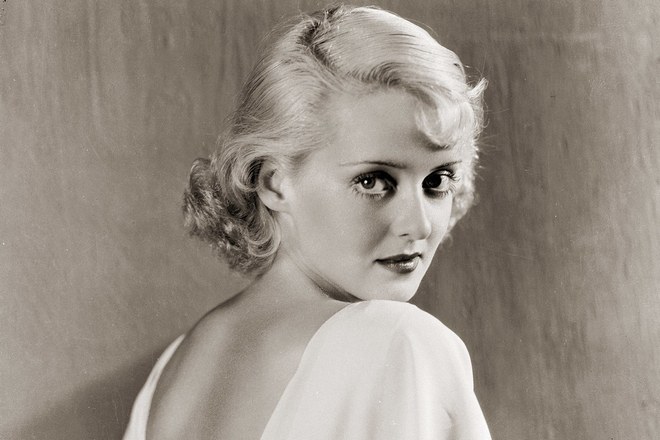
After her divorce from Harlow in 1915, Ruth Davis moved her children to the Berkshires, where Elizabeth attended a spartan boarding school called Crestalban. In 1921, the female part of the Davis family changed house again, moving to New York. In the United States, the sisters became Girl Scouts. Bette was so successful that she ranked as a Patrol Leader.
Elizabeth attended Cushing Academy, a boarding school in Ashburnham, Massachusetts. Here Bette met her future husband, Harmon O. Nelson.
Films
In 1926, Davis saw a production of Henrik Ibsen's The Wild Duck starring Blanche Yurka and Peg Entwistle. The evening spent in the theater was vital in the biography of the girl; she was taken with the idea of becoming an actress. The girl signed up for an audition for admission to the Manhattan Civic Repertory, but its director, the actress Eva Le Gallienne, called Bette "insincere" and "frivolous."
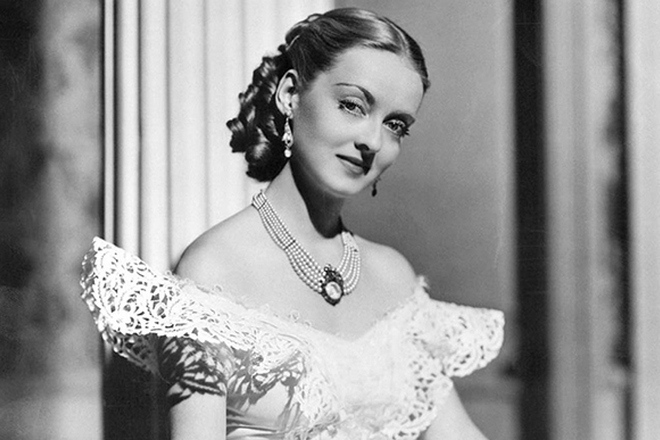
The girl did not give up and tried to get into George Cukor's stock theater company. The director was not impressed by Bette's acting talent, but he gave her a small part of a girl singing in the choir in the play Broadway. In 1929, Davis played the major role in the production of Virgil Geddes' play The Earth Between. Even though the production was postponed for a year, it became Bette's big break: Blanche Yurka offered Elizabeth the role of Hedwig in the fateful play The Wild Duck.
Inspired by the success, in 1930, 22-year-old Davis went to conquer Hollywood. The girl failed the audition at Universal Studios, but she was used as a "stage prop" for the auditions of other actors: 15 men, one after another, had to kiss her passionately.
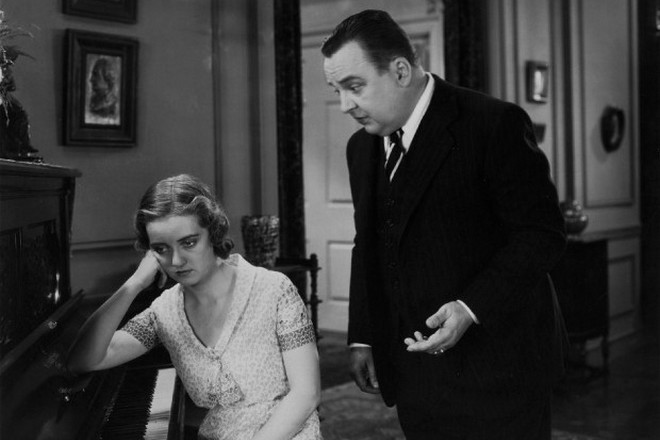
A year later, Bette returned to the Studio but chose the wrong outfit for that occasion: her deep cleavage made the director William Wyler angry, and he kicked the girl out of the pavilion. The head of Universal Studios, Carl Laemmle, was ready to let Davis go for good when the director Karl Freund noted that she would be suitable for the film Bad Sister (1931). This motion picture became the actress's debut.
In two years, 1931 and 1932, the actress starred in six films of Universal Studios and Columbia Pictures: Waterloo Bridge, Seed, Way Back Home, The Menace, and Hell's House. None of them made Bette famous, so, being disappointed in her talent, she decided to leave Hollywood.
The actor George Arliss appeared just in time, recommending Davis for the leading role in the movie The Man Who Played God (1932). The film brought the girl her long-awaited fame. Warner Bros. signed a five-year contract with her. They worked together for 18 years.

Davis received widespread critical acclaim in 1934, playing in the film adaptation of W. Somerset Maugham's novel, Of Human Bondage. While many more experienced actresses turned down the role of Mildred Rogers, Bette saw it as a great chance to demonstrate the full range of her acting skills.
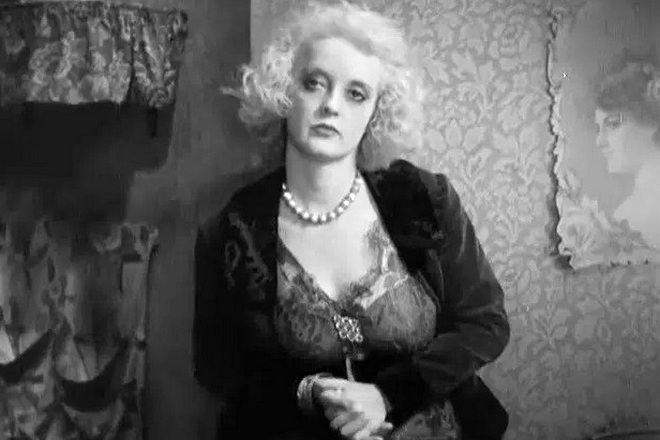
After starring in this film, The New York Times wrote that she was "becoming one of the most interesting of our screen actresses," and in 1935 she received an Oscar for Best Actress. Bette treated the award indifferently, calling it a "consolation prize."
Davis believed that the mediocre role of "empty-headed beauty" was harmful to her career, therefore, violating the terms of the contract with Warner Bros., she starred in two independent British films and filed a request to terminate her contract with the film company. Warner Bros., however, responded by serving legal papers on her. Davis explained her actions to journalists:
"I knew that, if I continued to appear in any more mediocre pictures, I would have no career left worth fighting for."
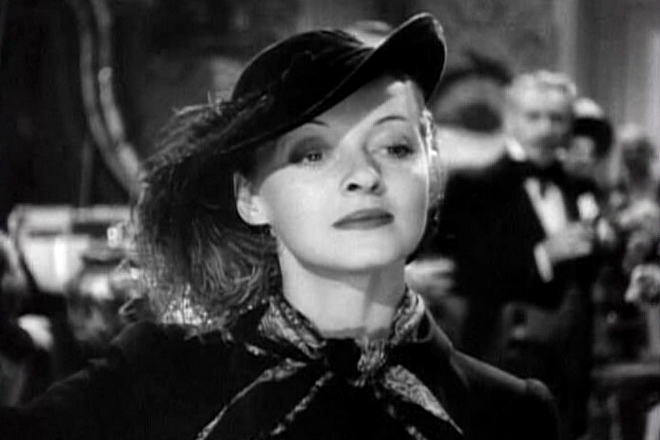
The actress lost the trial and returned to Hollywood, with debts to Warner Bros. and no contract. The absence of the document, however, did not deprive Davis of work: for her role in the film Jezebel (1938) the girl was awarded an Oscar for the second time. The success provoked rumors in the press, according to which Bette was to play the role of Scarlett O'Hara in the film Gone With the Wind. In fact, the director chose fresh and inexperienced Vivien Leigh over the already known actress.
In the following years, the name Bette Davis was all over the tabloids. Dark Victory (1939) brought the actress a third Oscar, and The Private Lives of Elizabeth and Essex (1939) was the first, and the only color film shot at the peak of her career. Davis had to shave off her hair and eyebrows for her part of Elizabeth I of England.
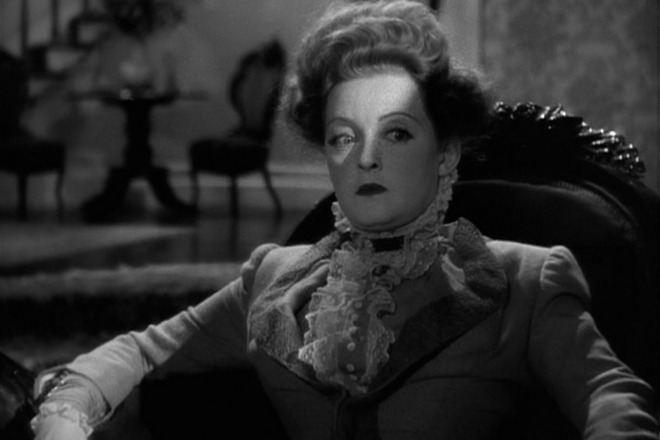
The role of Regina Giddens in the drama film The Little Foxes (1941) made Bette Davis the second actress after Faye Dunaway, whose villain character got into the list of the American Film Institute's one-hundred greatest screen villains. This film is the last work with William Wyler in the filmography of the girl.
During the war, Davis stepped back from the big screen, showing her talent to soldiers in theaters. Many actors followed her example: they met with the front heroes in pubs and restaurants, performing monologues or just having a talk. These events formed the basis for the film Hollywood Canteen (1944).

In her memoirs of 1962, Davis wrote:
"There are few accomplishments in my life that I am sincerely proud of. The Hollywood Canteen is one of them."
In 1980, she was awarded the Distinguished Civilian Service Medal for her work with the Hollywood Canteen. After the birth of her daughter in 1947, the popularity of Davis went down: she turned down the parts that would bring awards to other actresses, criticized the script spoiling relations with colleagues. In the 1950s, she was called the most scandalous and selfish actress.
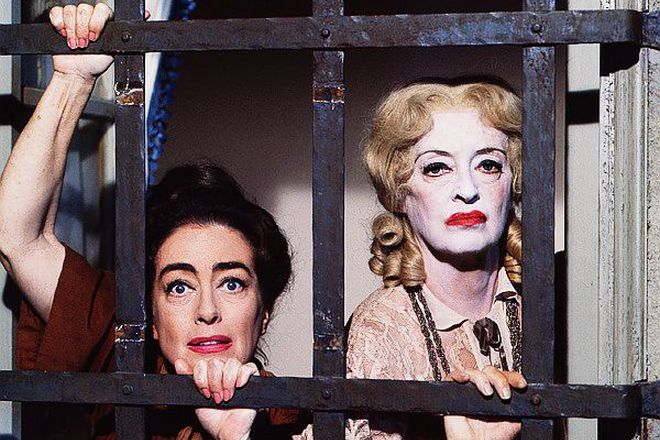
The psychological thriller-horror film What Ever Happened to Baby Jane? (1962), in which the actress starred with Joan Crawford, her sworn enemy, saved the actress from the total failure. The two women for half a century competed for awards and men, hating each other. After Crawford's death in 1977, Davis said:
"You should never say bad things about the dead, only good… Joan Crawford is dead. Good.”
Personal life
Bette Davis first married on August 18, 1932, in Yuma, Arizona. She chose Harmon Oscar Nelson to be her better half. The marriage was actively discussed in the press: the actress was at the peak of her fame, and her salary was $1,000 a week, while her husband brought to the family budget less than $100 for the same period.

Davis commented that many Hollywood actresses earn more than their husbands, but for Nelson, the economic superiority of his wife felt humiliating. It got to the point that he forbade her to buy a house because he couldn't afford to pay for it himself.
As a result, money destroyed the relationship between the couple. Married to Nelson, Davis repeatedly resorted to abortion because she did not want to raise a child in a "troubled" family. In 1938, Harmon found out that his wife was cheating on him with actor Howard Hughes, and filed for divorce.

During the shooting of the film Jezebel, Bette went out with director William Wyler. The girl called him"the love of her life."
In 1940, Bette had an affair with George Brent, a colleague from the film The Great Lie. The actor asked her to marry him, but she refused because she had met Arthur Farnsworth, the owner of a hotel in New England. The couple married in December of the same year in Rimrock, Arizona. In August 1943, her husband died.

In 1945, Davis married artist William Grant Sherry. She got interested in the man because of one simple fact - he had never heard of her name. Two years later, at the age of 39, Bette gave birth to her first child, Barbara Davis Sherry. The actress was fascinated by motherhood; she seriously thought about ending her career. However, the number of proposals steadily increased, and the woman threw herself at work, spending days on the set, and the relationship between mother and daughter suffered from that.

Since 1950, the celebrity had been married to Gary Merrill. The couple adopted a girl and a boy, Margot Mosher Merrill (born January 6, 1951) and Michael (born January 5, 1952). Ten years after the wedding, the marriage fell apart. Alcoholism and domestic violence were the grounds for divorce.
Death
In 1983, Davis was diagnosed with breast cancer and had a mastectomy performed on her. The actress suffered four strokes, which resulted in the paralyzation of the left side of her body. The disease did not make Bette give up smoking and alcohol: she smoked up to 100 cigarettes a day for the rest of her life.

Davis lost consciousness during the American Cinema Awards in 1989. All tabloids published the moment of the fall. The actress refused to go to hospital, and on October, 6 of the same year 81-year-old Bette Davis died of a recurrence of breast cancer. She was buried in Forest Lawn-Hollywood Hills Cemetery in Los Angeles, alongside her mother and sister.
Filmography
- 1931 - The Bad Sister
- 1934 - Of Human Bondage
- 1935 - Dangerous
- 1938 - Jezebel
- 1939 - The Private Lives of Elizabeth and Essex
- 1942 - In This Our Life
- 1945 - The Corn Is Green
- 1952 - The Star
- 1956 - The Catered Affair
- 1962 - What Ever Happened to Baby Jane?
- 1964 - Hush… Hush Sweet Charlotte
- 1989 - Hush… Hush Sweet Charlotte




